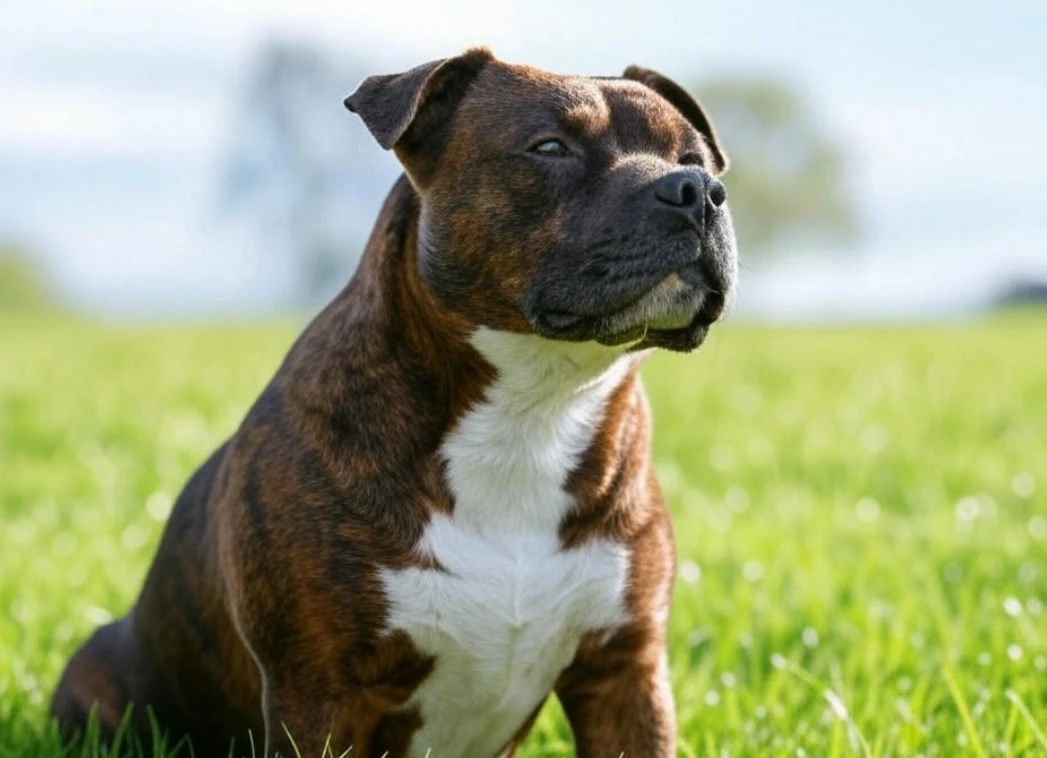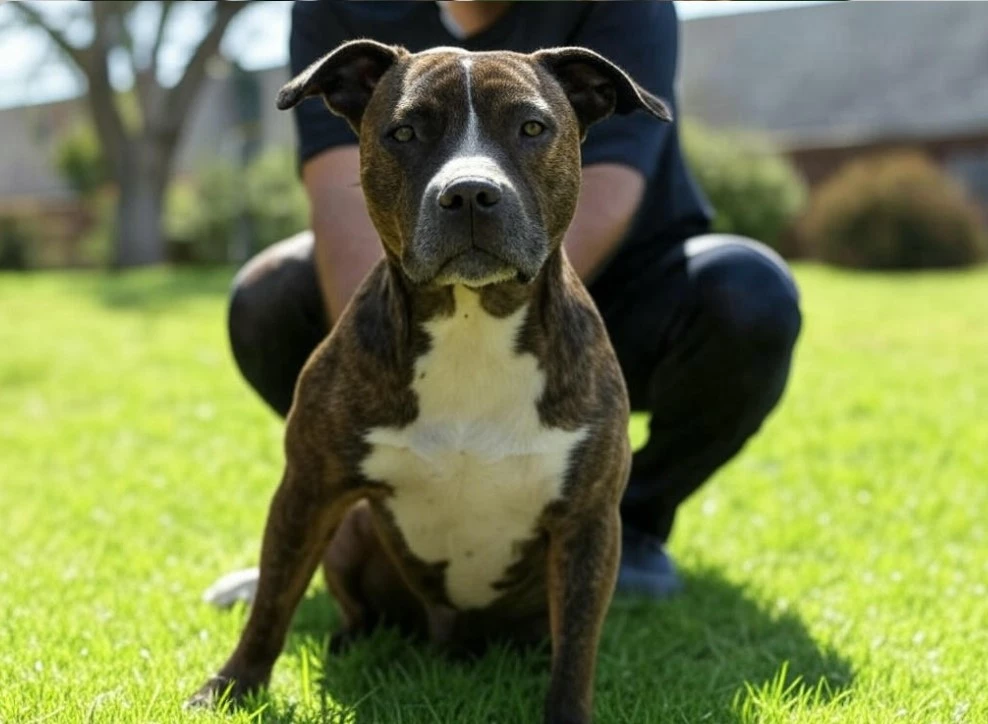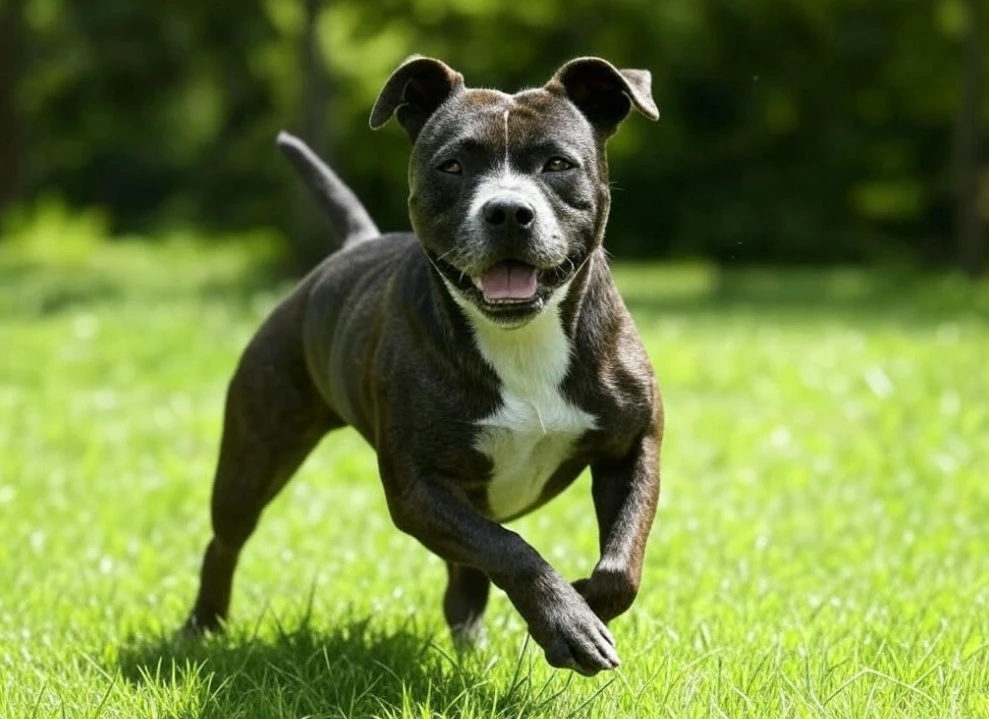
The American Staffordshire Terrier, often affectionately known as the AmStaff, is a breed of powerful build and boundless devotion. Beneath its muscular physique lies a sociable, intelligent, and affectionate heart. Bred initially for fighting, this misunderstood breed has transformed into one of America’s most loving family companions, trusted protectors, and canine athletes.
Originating in the 19th century, the breed traces its roots to Staffordshire, England, where it was developed from a mix of terriers and bulldogs. These early dogs were agile, resilient, and determined—bred to participate in brutal sports like bull-baiting and dog fighting. When these dogs arrived in the U.S., breeders refined their appearance and temperament, creating a slightly larger, more amiable variant that would go on to become the American Staffordshire Terrier. The American Kennel Club officially recognized the breed in 1936.
One of the most legendary AmStaffs was Sergeant Stubby, a real-life canine war hero during World War I. He served alongside American troops in France, warned of gas attacks, and even captured a German soldier. Stubby was awarded numerous medals and remains a symbol of the AmStaff’s courage and loyalty.
The breed is compact and muscular with a confident posture. Adult males stand between 17–19 inches and weigh 55–70 pounds, while females weigh 40–55 pounds. The broad, flat head features a pronounced stop, square muzzle, and powerful jaws. The medium-length, muscular neck leads into a deep chest and firm, tucked abdomen. Legs are strong and well-set for balance and agility, supporting the breed’s signature springy gait. The ears are set high and usually left natural, and the tail is short, tapering, and never curled.

The AmStaff’s coat is short, dense, and stiff, requiring minimal grooming. All coat colors and patterns are accepted by the AKC, from black and white to brindle, fawn, and even spotted combinations. White markings are acceptable but shouldn’t cover more than 80% of the dog’s body. The breed’s striking appearance is only matched by its confident yet affectionate demeanor.
Though protective, the AmStaff is deeply loyal and thrives in a home filled with love, structure, and clear boundaries. They adore being involved in daily family life, eager to please their people and quick to form strong bonds with every household member.
To bring out the best in your AmStaff, early socialization is key. Introduce your pup to various people, animals, and environments from the start. These dogs are naturally suspicious of strangers but should not be aggressive if raised properly. Unwanted behaviors like possessiveness or chewing can be curbed with training, redirection, and firm yet compassionate guidance.
Training is best approached with patience and consistency. AmStaffs do not respond well to yelling or rough handling. Instead, use positive reinforcement—treats, verbal praise, and games—to encourage good behavior. This breed does have dominant tendencies, so consistent leadership is essential. If needed, consider enrolling in a training course to build trust and teach basic obedience.

Exercise is a non-negotiable aspect of AmStaff ownership. These athletic dogs require at least two hours of daily activity to stay healthy and happy. This can include long walks, fetch games, agility courses, or scent tracking. They love to be challenged, both physically and mentally, and excel in canine sports and obedience competitions.
Despite their high energy outdoors, AmStaffs are calm and relaxed inside the home. However, due to their strong build and assertive personality, public walks should always be on-leash, preferably with a muzzle in unfamiliar environments. This is not due to aggression, but as a precaution given the breed’s strength and protective instincts.
AmStaffs are naturally curious and love to chew, especially as puppies. Provide durable chew toys and dental treats to satisfy their instincts and protect your furniture. Chewing also helps reduce tartar and keep their teeth clean.
Grooming is easy with this breed. A weekly brushing is usually enough to keep their coat clean and shiny. Bathe only when necessary, as frequent washing can dry out their skin. Check and clean their ears weekly, wipe the eyes if discharge appears, and trim their nails monthly.

Diet plays a crucial role in the health and longevity of an AmStaff. Whether you choose premium commercial dog food or a balanced natural diet, make sure the nutritional needs of a medium-to-large, muscular breed are met. Puppies need more protein during growth, while adult dogs benefit from a high-protein, low-carb menu.
Avoid feeding your dog processed foods, smoked meats, sugar-laden treats, and bones. These can lead to digestive issues or injury. Supplement natural diets with vitamins and minerals recommended by your vet.
Hydration is essential: an adult AmStaff should drink around two pints of water daily. Always provide clean, fresh water at home and during walks.
AmStaffs are not prone to excessive barking or hyperactivity. With the right structure and mental stimulation, they are calm, composed, and balanced. Their reputation for aggression is entirely misplaced when you consider the thousands of well-trained, affectionate AmStaffs living peacefully in homes across the world.

Though not one of the top-ranking breeds by registration, the American Staffordshire Terrier sits comfortably at #81 in AKC’s popularity list. This relatively modest ranking is not reflective of the breed’s quality—rather, it indicates that AmStaffs are best suited to experienced, committed owners who appreciate their bold spirit and loyal nature.
Puppies from reputable breeders typically cost between $800 and $1,500, while show-quality or champion-line pups may reach up to $2,500. All in Pets partners with ethical breeders who prioritize health, temperament, and responsible socialization.
For families or individuals who want a dog with heart, brains, and resilience, the American Staffordshire Terrier stands out as a protective and affectionate friend who will be by your side no matter what.